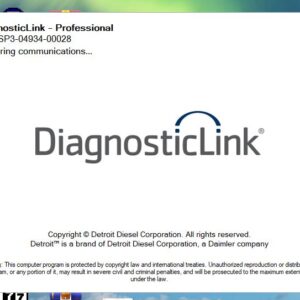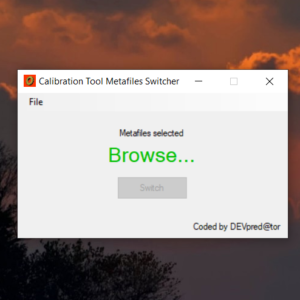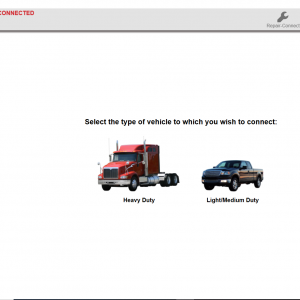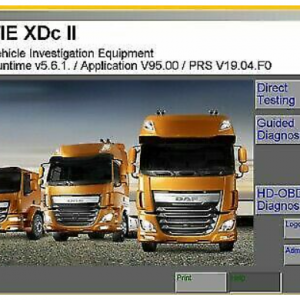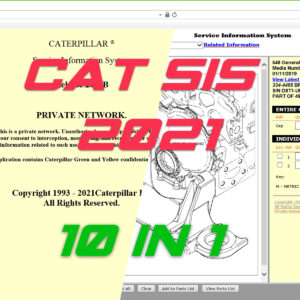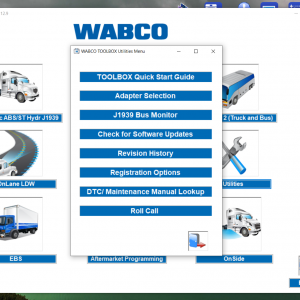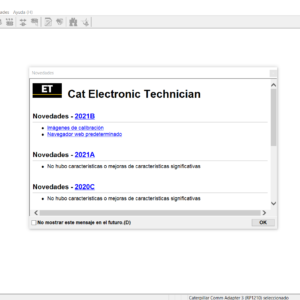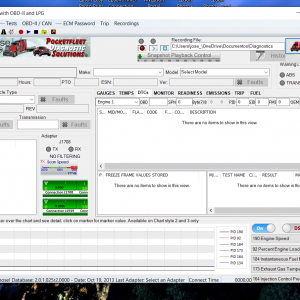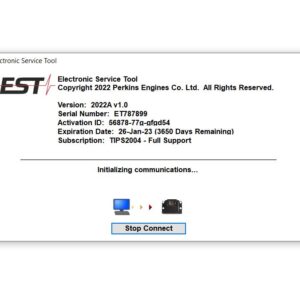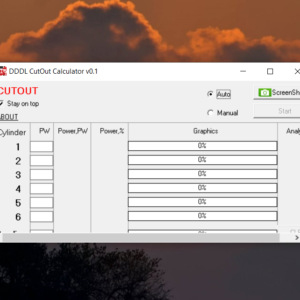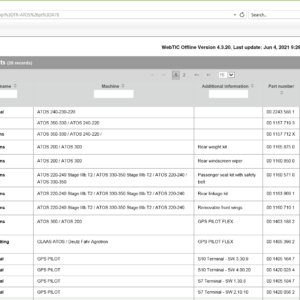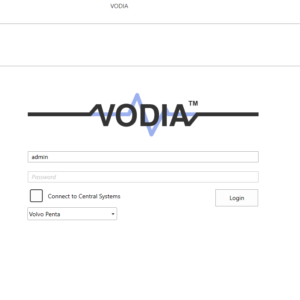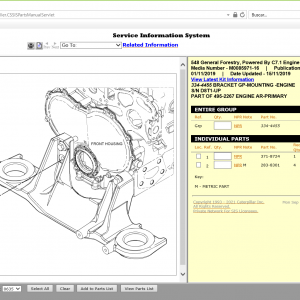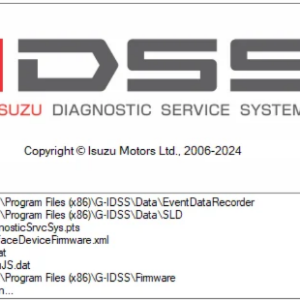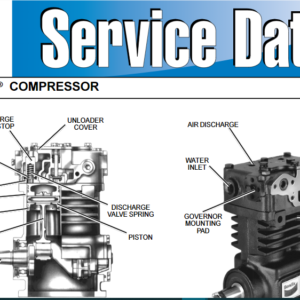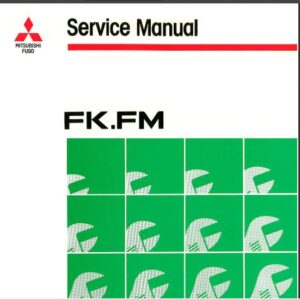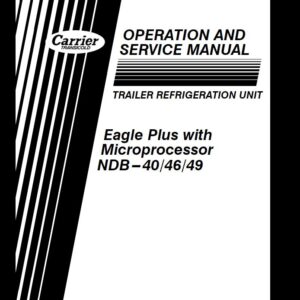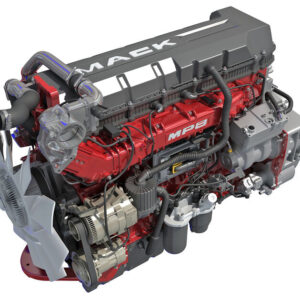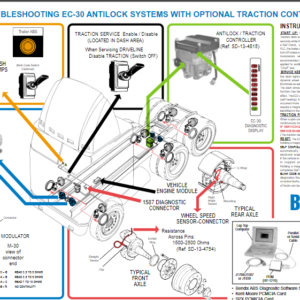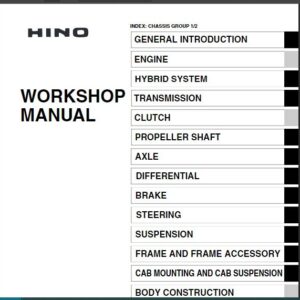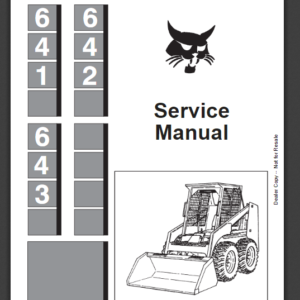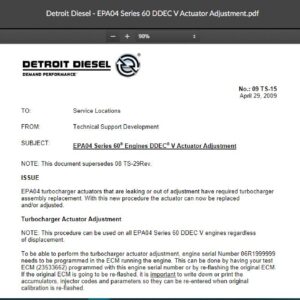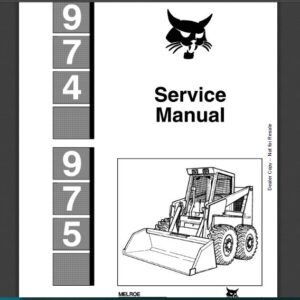Cummins ISX12 CM2250 (2010-12) Fault Code: 3253 PID: SPN: 3242 FMI: 16 Aftertreatment Diesel Particulate Filter Intake Temperature- Data Valid But Above Normal Operating Range- Moderately Severe Level
Circuit Description
The aftertreatment temperature sensors are used by the engine control module (ECM) to monitor the engine exhaust temperatures in the aftertreatment system. The aftertreatment temperature sensors are thermistors and change resistance based on the temperature being measured. The ECM provides a 5 volt reference voltage to the sensor. The ECM monitors the change in signal voltage and converts this to a temperature value.
When the exhaust temperature is low, the sensor or thermistor resistance is high. The ECM signal voltage only pulls down a small amount through the sensor to ground. Therefore, the ECM senses a high signal voltage or a low temperature. When the exhaust gas temperature is high, the sensor resistance is low. The signal voltage pulls down a large amount. Therefore, the ECM senses a low signal voltage, or a high temperature.
Component Location
The aftertreatment diesel particulate filter intake temperature sensor is located in the aftertreatment system. It is located at the outlet of the diesel oxidation catalyst and before the diesel particulate filter. Refer to the original equipment manufacturer (OEM) service manual.
Conditions for Running the Diagnostics
This diagnostic runs continuously when the engine is operating and active regeneration of the aftertreatment diesel particulate filter is not occurring.
Conditions for Setting the Fault Codes
The aftertreatment diesel particulate filter intake temperature sensor reading exceeds 650?C [1202?F] for 85 seconds, or the difference between the diesel oxidation catalyst intake temperature and the diesel particulate filter intake temperature is greater than 365?C [689?F] for 50 seconds.
Action Taken When the Fault Code is Active
The ECM illuminates the red STOP ENGINE lamp immediately after the diagnostic runs and fails.
Active and stationary (parked) regeneration will be disabled.
Exhaust gas recirculation (EGR) valve operation will be disabled.
Conditions for Clearing the Fault Code
To validate the repair using a Diagnostic Road Test, utilize a route that incorporates both stop-and-go city driving and steady state highway driving. It may be necessary to load the unit for certain diagnostics in the ECM to run.
To validate the repair using a Chassis Dynamometer Test, utilize a routine that incorporates acceleration and motoring events, steady state highway operation, and load. This will simulate normal driving and allow the diagnostics in the ECM to run.
The fault code status displayed by INSITE? electronic service tool will change to INACTIVE immediately after the diagnostic runs and passes.
The ECM will turn off the red STOP ENGINE lamp after the diagnostic runs and passes.
The ?Reset All Faults? command in INSITE? electronic service tool can be used to clear active and inactive faults.
Shop Talk
This fault code is logged when the ECM has detected a high temperature condition in the aftertreatment system and active regeneration of the aftertreatment diesel particulate filter is not occurring. The fault code indicates that a secondary fuel source is entering the aftertreatment system and is creating a temperature increase across the aftertreatment diesel particulate filter. This fault will go inactive immediately after the aftertreatment temperatures drop below the warning limit, and will likely be inactive when the vehicle is in the shop. For these reasons, this troubleshooting tree must be used for both active and inactive fault codes.
Possible causes of this fault code include:
Excessive engine oil or diesel fuel introduced into the exhaust system from the engine
A damaged engine fuel injector caused unburned diesel fuel to enter the exhaust system
The aftertreatment diesel particulate filter outlet temperature sensor malfunctioned in-range
A face plugged aftertreatment diesel oxidation catalyst
An in-range engine sensor malfunction has occurred, causing excessive fuel to enter the exhaust system.
Engine brake malfunctioned.
The aftertreatment system must be inspected after making the appropriate repair outlined in this fault code troubleshooting tree. Progressive damage to the aftertreatment system may have occurred. Remove the exhaust aftertreatment system from the vehicle to inspect it for potential damage and reuse. Refer to the OEM service manual.
Reference the appropriate OEM wiring diagram when troubleshooting circuits that utilize wiring supplied by the OEM.
For intermittent power supply and data link communication issues with aftertreatment components, it is highly recommended that the OEM power distribution center fuses and relays be thoroughly checked for loose, missing, or intermittent connections.
Possible Cause:
1) ECM calibration
-
DETROIT DDDL 8.14 SP3 – Detroit Diesel Diagnostic Link 8.14 SP3 2021 ( 1PC )
Detroit $73.00Rated 0 out of 5 -
DAF Davie Runtime v5.6.1 Davie XDc ll [02.2019] + Expire Fix 302.00 Unlock ( Windows 7 )
DAF $70.00Rated 0 out of 5
-
10 IN 1 FOR CAT SIS Caterpillar 2021 Full Service Dealer INCLUDING CAT 2019 C
CAT $110.00Rated 0 out of 5 -
PF Diagnose 2.0.2.23 Diagnostics Software 2013 – Full Heavy & Medium Duty with OBDII Support – Online Installation Service
PF Diagnose $60.00Rated 0 out of 5 -
CLAAS WebTIC Offline [11.2021] Service Information – ENGLISH Language
CLAAS $100.00Rated 0 out of 5 -
2021 VOLVO PREMIUM TECH TOOL PTT V2.8.21 VCADS+DEVELOPER TOOL+APCI 2021/09 ( 1 PC )
Trucks software $85.00Rated 0 out of 5
Related products
-
Allison 1000 & 2000 Gen 4 Fault Codes: P0872 Transmission Pressure Switch Solenoid E Circuit Stuck Closed
1000 & 2000 Gen 4 $50.00Rated 0 out of 5 -
Allison 1000 & 2000 Gen 4 Fault Codes: P0871 Transmission Pressure Switch Solenoid E Circuit Stuck Open
1000 & 2000 Gen 4 $50.00Rated 0 out of 5 -
Allison 1000 & 2000 Gen 4 Fault Codes: U1301 J1850 (Class 2) Serial Data Communication Link Low
1000 & 2000 Gen 4 $50.00Rated 0 out of 5 -
Allison 1000 & 2000 Gen 4 Fault Codes: P1891 Engine Throttle Position Sensor Pulse Width Modulation (PWM) Signal Low Input
1000 & 2000 Gen 4 $50.00Rated 0 out of 5 -
Allison 1000 & 2000 Gen 4 Fault Codes: P0122 Pedal Position Sensor Circuit Low Voltage
1000 & 2000 Gen 4 $50.00Rated 0 out of 5 -
Allison 1000 & 2000 Gen 4 Fault Codes: P1688 Unmanaged Engine Torque Delivered To TCM Signal
1000 & 2000 Gen 4 $50.00Rated 0 out of 5 -
Allison 1000 & 2000 Gen 4 Fault Codes: U1016 Class 2 J1850 (Class 2) Powertrain Controller State of Health Failure
1000 & 2000 Gen 4 $50.00Rated 0 out of 5 -
Allison 1000 & 2000 Gen 4 Fault Codes: U0100 CAN Bus ECM Error
1000 & 2000 Gen 4 $50.00Rated 0 out of 5 -
Allison 1000 & 2000 Gen 4 Fault Codes: P0218 Transmission Fluid Over Temperature Condition
1000 & 2000 Gen 4 $50.00Rated 0 out of 5 -
Allison 1000 & 2000 Gen 4 Fault Codes: P0870 Transmission Pressure Switch Solenoid E Circuit
1000 & 2000 Gen 4 $50.00Rated 0 out of 5 -
Allison 1000 & 2000 Gen 4 Fault Codes: P1779 Engine Torque Delivered To TCM Signal
1000 & 2000 Gen 4 $50.00Rated 0 out of 5 -
Allison 1000 & 2000 Gen 4 Fault Codes: U0031 J1850 (Class 2) Serial Data Communication Link Low
1000 & 2000 Gen 4 $50.00Rated 0 out of 5 -
Allison 1000 & 2000 Gen 4 Fault Codes: P0873 Transmission Pressure Switch Solenoid E Circuit High
1000 & 2000 Gen 4 $50.00Rated 0 out of 5 -
Allison 1000 & 2000 Gen 4 Fault Codes: P0875 Transmission Reverse Pressure Switch Circuit Malfunction
1000 & 2000 Gen 4 $50.00Rated 0 out of 5 -
Allison 1000 & 2000 Gen 4 Fault Codes: P1892 Throttle Position Sensor Pulse Width Modulation (PWM) Signal High Input
1000 & 2000 Gen 4 $50.00Rated 0 out of 5

